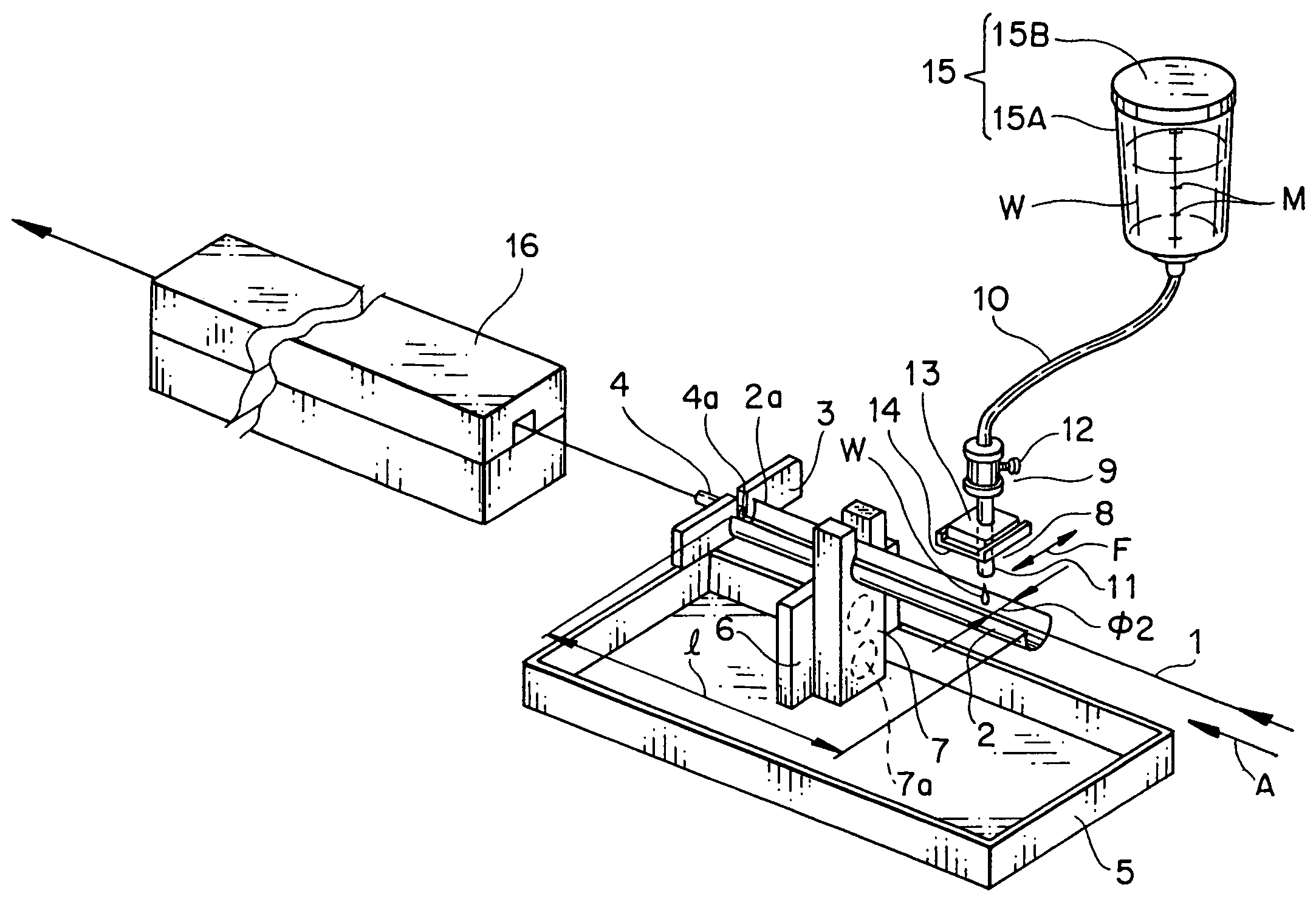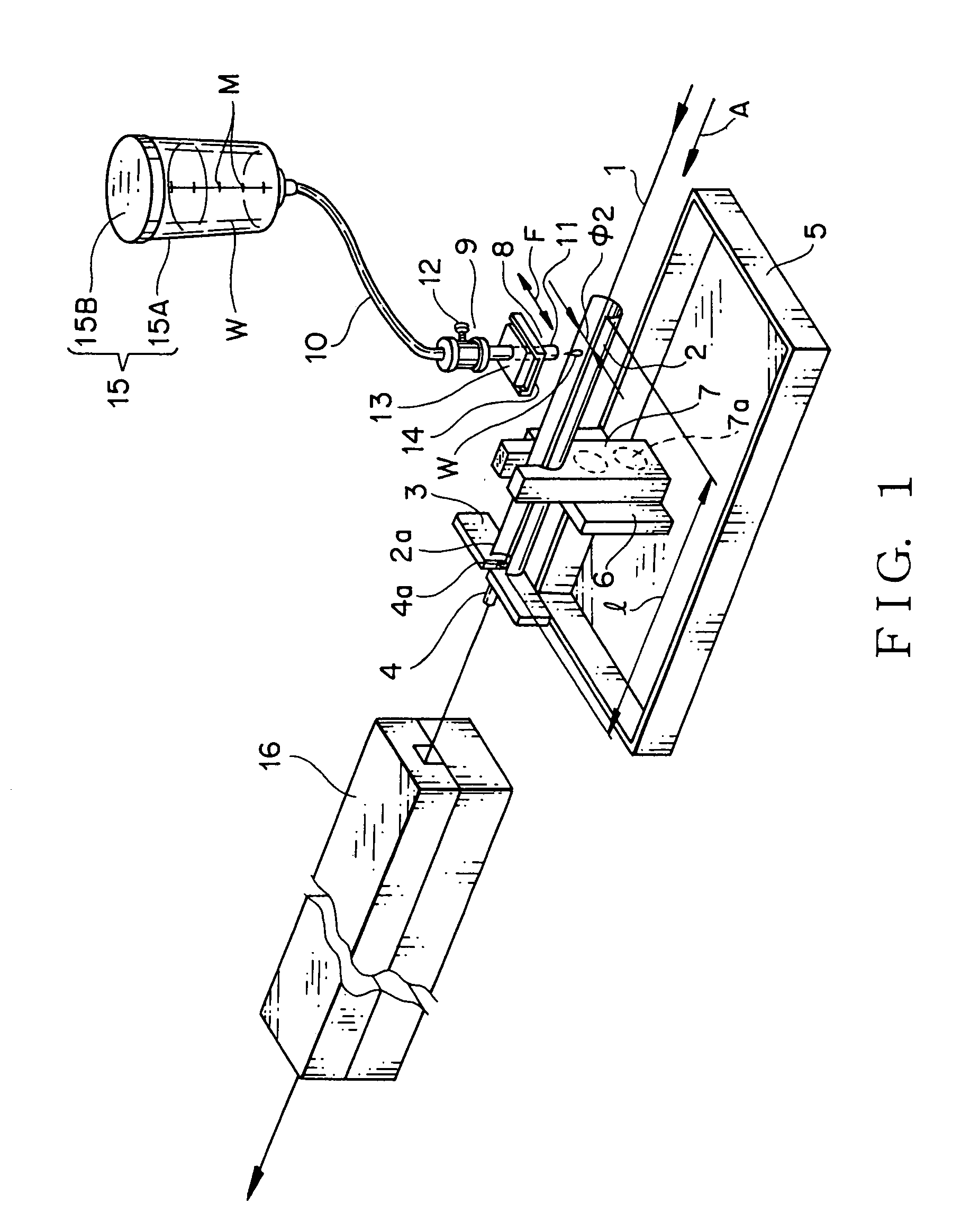Device for applying varnish to electric wire and method of applying varnish
a technology for varnishing devices and electric wires, applied in the direction of insulating conductors/cables, cables, insulated conductors, etc., can solve the problems of loss of insulation performance, difficulty in maintaining the quality of varnish, and difficulty in continuous maintenance of varnish viscosity, etc., to achieve excellent electric and heat insulation performance, maintain the quality of varnish, and the effect of sufficient applicability
- Summary
- Abstract
- Description
- Claims
- Application Information
AI Technical Summary
Benefits of technology
Problems solved by technology
Method used
Image
Examples
concrete example 1
[0080]By rolling the supplying roller not shown so that an electric wire having an outer diameter φ of 1.00 mm is supplied and taking up the electric wire by the take-up reel not shown, the electric wire is moved at a speed of about 20 m / minute. By tuning the operating knob 12 of the dropping means 8, from the dropping nozzle 11, a suitable quantity of the varnish W contained in the tank 15 is dropped one drop by one drop onto the electric wire 1 which is moving in the moving direction A.
[0081]In this case, the varnish W is composed of the resin component which is a compound of one or two kinds of resins of e.g. polyamide, epoxy, polyimide, etc. and the solvent of cresol, xylene, xylol, ethylbenzene, phenol, methanol, ethanol, water, etc. In this embodiment, the varnish W is composed of the resin component of 10–30% by weight and solvent of 70–90% by weight. In this case, the varnish W has the resin component of 10.0–30.0% by weight and the viscosity of 1.0–35 dPa·s at the varnish l...
concrete example 2
[0094]By rolling the supplying rollers not shown so that plural electric wires (three wires in FIG. 4) 1, 1, . . . are supplied and taking up the electric wires by the take-up reels not shown, the electric wires are moved at desired speeds of about 15–20 m / minute in the moving direction A. By tuning the operating knob 12 of the dropping means 8 for each of the electric wires 1, 1, . . . , from each of the dropping nozzles 11, a suitable quantity of the varnish W contained in each of the tanks 15 is dropped one drop by one drop onto the electric wires 1, 1, . . . which are moving in the moving direction A.
[0095]The varnish W with the density and viscosity adjusted is accommodated within the sealed tanks 15, 15, . . . and is exposed to the open air after it has dropped through the supplying tube 10 from the dropping nozzle 11. Therefore, the solvent whose rate adjusted to the resin component volatizes in a small quantity with passage of time. The mixing rate of the resin component to ...
PUM
| Property | Measurement | Unit |
|---|---|---|
| moving speed | aaaaa | aaaaa |
| length | aaaaa | aaaaa |
| outer diameter φ2 | aaaaa | aaaaa |
Abstract
Description
Claims
Application Information
 Login to View More
Login to View More - R&D
- Intellectual Property
- Life Sciences
- Materials
- Tech Scout
- Unparalleled Data Quality
- Higher Quality Content
- 60% Fewer Hallucinations
Browse by: Latest US Patents, China's latest patents, Technical Efficacy Thesaurus, Application Domain, Technology Topic, Popular Technical Reports.
© 2025 PatSnap. All rights reserved.Legal|Privacy policy|Modern Slavery Act Transparency Statement|Sitemap|About US| Contact US: help@patsnap.com



